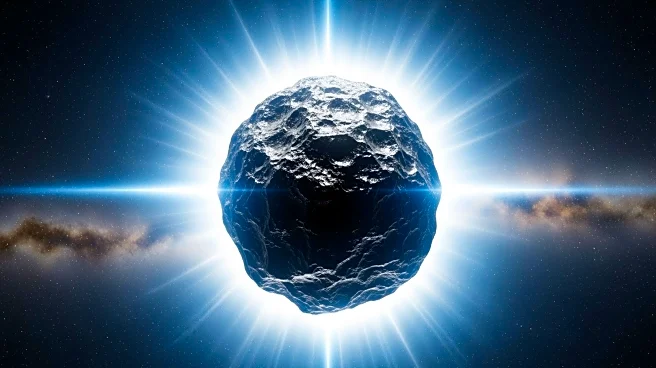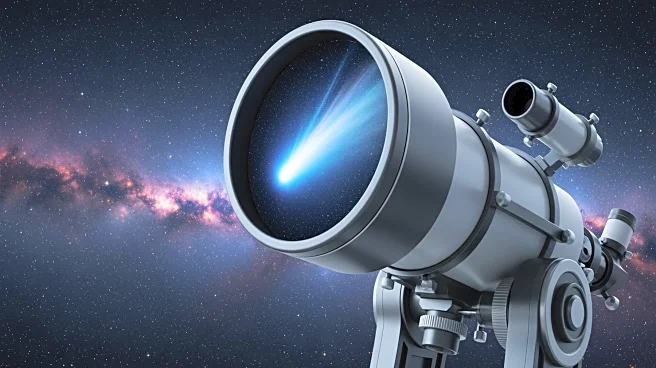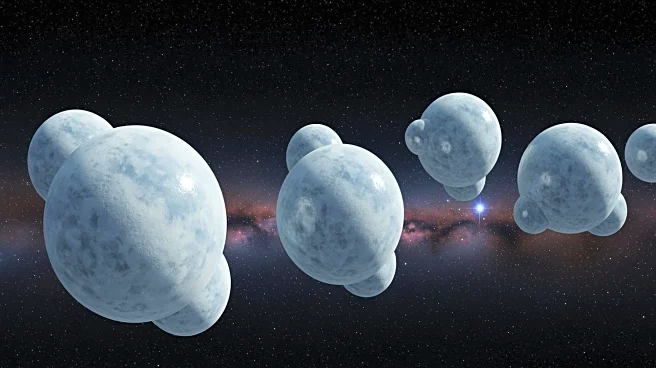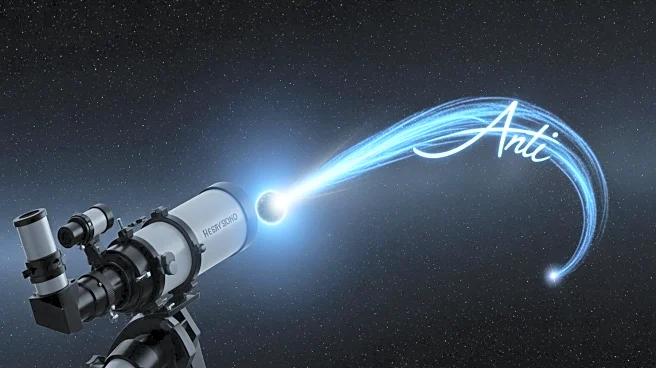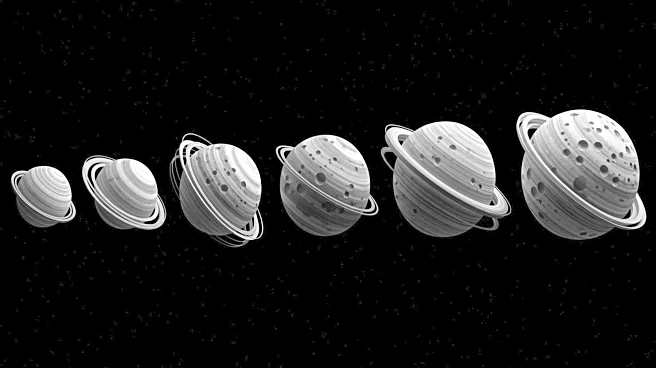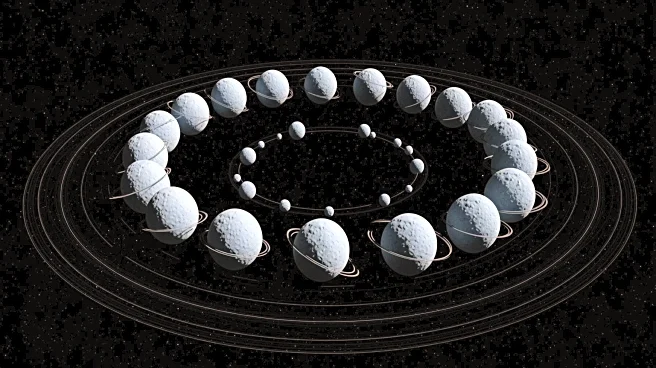What's Happening?
A new near-Earth asteroid, named 2025 SC79, has been discovered by a scientist at the Carnegie Institute for Science. This asteroid is part of the Atira group, characterized by orbits entirely within Earth's orbit. The discovery was made using the Dark
Energy Camera on the National Science Foundation's Blanco 4-meter telescope. 2025 SC79 is notable for its orbit, which is entirely within Venus' orbit and crosses Mercury's orbit, completing a trip around the Sun in just 128 days. This makes it the third shortest orbital period of any known asteroid. The asteroid is approximately 700 meters in diameter, and its potential impact could have catastrophic consequences on a continental scale. The discovery was confirmed by additional observations from the NSF's Gemini telescope and Carnegie Science's Magellan telescopes.
Why It's Important?
The discovery of 2025 SC79 is significant due to its potential impact hazards. Asteroids that are difficult to detect, such as those near the Sun, pose a serious threat to Earth. The size of 2025 SC79 means that if it were to impact Earth, it could cause widespread destruction. Understanding the composition and origins of such asteroids is crucial for developing strategies to protect the planet. The discovery highlights the importance of continued observation and research to identify and track near-Earth objects that could pose a threat.
What's Next?
The asteroid will soon disappear behind the Sun for several months, after which astronomers will have the opportunity to conduct further observations. These observations will aim to gather more detailed information about the asteroid's composition and origins. Understanding how such asteroids arrive at their current locations can provide insights into the history of the Solar System and help in developing protective measures for Earth.





